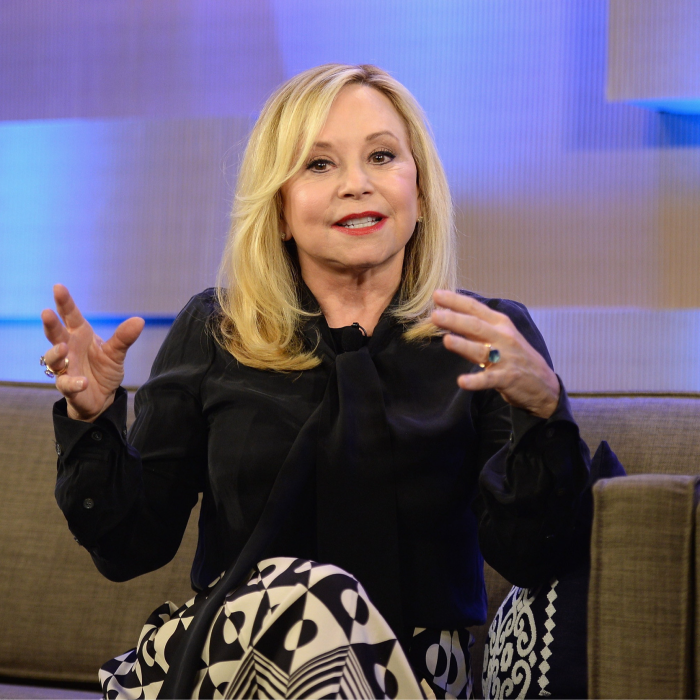[ad_1]
At the start of the pandemic, Katherine Simpson pressed pause on her Rent the Runway subscription. But recently the San Francisco-based labour union communications specialist resumed the service, which allows her to rent up to eight pieces of clothing and accessories for $144 per month. “Living in a city my wife and I have very little closet space, so to be able to return items that take up a lot of room, like outerwear, is really useful for us,” she explains.
Rent the Runway needs her. By the end of 2020 nearly two-thirds of its 134,000 customers had abandoned its monthly rental service, forcing the company to cut costs by 51 per cent and lay off or furlough half its staff. The 13-year-old company’s shares are presently hovering around $5.34, down from the October initial public offering price of $21 per share.
Once billed as a disrupter to fast fashion — “I plan to put Zara out of business,” chief executive Jennifer Hyman told online trade publication Glossy in 2017 — Rent the Runway is part of a coterie of companies that launched about a decade ago billed as the next Gap (Everlane), LensCrafters owner EssilorLuxottica (Warby Parker), Estée Lauder (Glossier) or eBay for designer luxury (The RealReal). With slick branding and a knack for recruiting new customers on social media, these online-native businesses were treated — and funded — like technology companies, promising vast audiences, fast growth and lower operational costs than incumbents saddled with expensive stores and “middle men”.
A decade on and a slew of IPOs later — online luxury consignment website The RealReal went public in June 2019, followed by peer-to-peer resale platforms Poshmark and ThredUp, geek-chic eyewear-maker Warby Parker, Rent the Runway and sustainability-branded shoemaker Allbirds in 2021 — that vision has yet to pan out, and investors are increasingly uncertain it ever will.
“There’s the big question of how did so many people believe their narrative?” says Sucharita Kodali, principal analyst at Forrester. “People wanted to believe that Goliath could be disrupted, and that all it took was a bit of Silicon Valley money to disrupt Goliath.”
It turns out that disrupting Goliath takes a lot of expensive infrastructure. Early on, Everlane and Warby Parker realised the very cost they promised to undercut — stores — would be necessary to reach the masses: even during the height of the pandemic in 2020, only 14 per cent of adults bought eyeglasses online, according to The Vision Council, and the vast majority of clothes are still bought offline. To make its rental model work, Rent the Runway became the world’s biggest dry-cleaner. And although it only has a handful of stores, The RealReal has spent millions on warehouse space to house, photograph and ship the second-hand luxury goods it sells online. Meanwhile, the cost of acquiring new customers through social media has soared. As a result, none of these companies are profitable — and, for most, their losses are widening.
The numbers have been improving at Rent the Runway, which reported a record 134,998 active subscribers in its most recent quarter. But with less than .08 per cent of US women subscribing to its service, the company is falling vastly short of the claim on its LinkedIn page that “women everywhere will soon have a subscription to fashion”. Many customers don’t see the value in paying for clothing they can’t keep; one former client complained of the logistics involved in returning rented pieces.


It’s a similar story at Warby Parker, which launched in 2010 promising to take on EssilorLuxottica with mid-cost prescription frames (originally priced at about $95) sold “direct to consumer” online. The company, which raised more than half a billion dollars from investors before going public and now offers eye exams and contact lenses at its 160 stores, has captured 1 per cent of market share according to its S-1 filing; EssilorLuxottica has 20 per cent. Warby Parker announced this month that it would lay off 15 per cent of its corporate workforce and cut marketing costs as its losses deepened to $32.2mn on revenues of $149.6mn in the latest quarter. The proposed solution? Expand its retail footprint to 900 stores.
The merino-wool sneaker-maker Allbirds, whose stock is trading at less than a fifth of the $28.64 a share at the close of the first day of trading, announced lay-offs and the closure of its activewear line this month as net losses increased to $18.1mn. Profits have also proved elusive at The RealReal despite the growth of the overall second-hand luxury market, leading to the replacement of founder Julie Wainwright as chief executive in June. (Glossier founder Emily Weiss stepped down as chief executive of the beauty brand in May.)
Except Rent the Runway, most of these companies got a boost during Covid-19 lockdowns — they are, after all, very good at selling online. But those gains have not proved lasting, and as their market values slide and profitability remains out of reach, they no longer yield the disruptive potential they once appeared to. “They are just digital-first retail stores,” says Forrester’s Kodali.
So long as these companies can continue to pay rent, they will survive the economic slowdown in the US. One of their peers, the direct-to-consumer online mattress company Casper, offers a cautionary tale — after two years of public trading, it was bought out by a private equity firm for just over half of its IPO price in November. For now, the incumbents can rest easy.
Lauren Indvik is the fashion editor of the FT
Find out about our latest stories first — follow @financialtimesfashion on Instagram
[ad_2]
Source link











